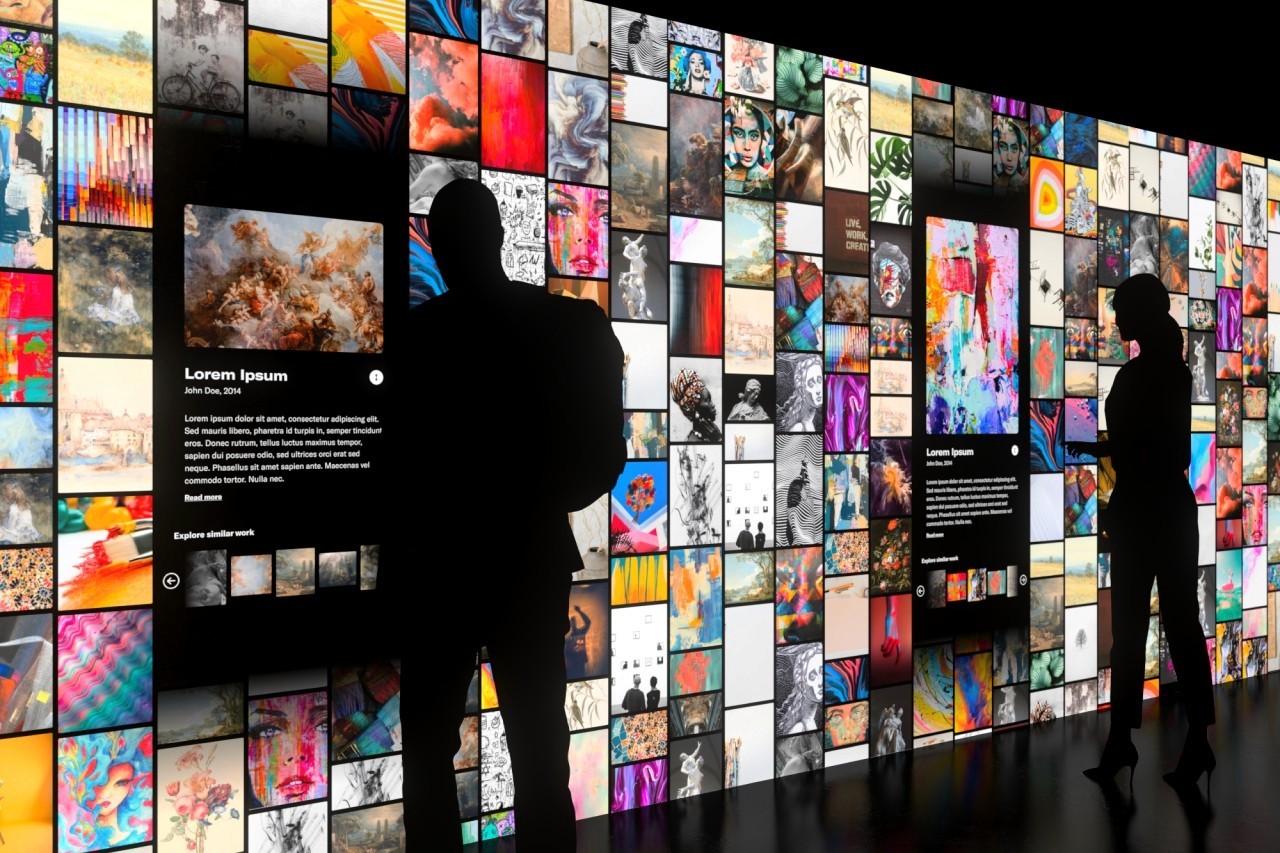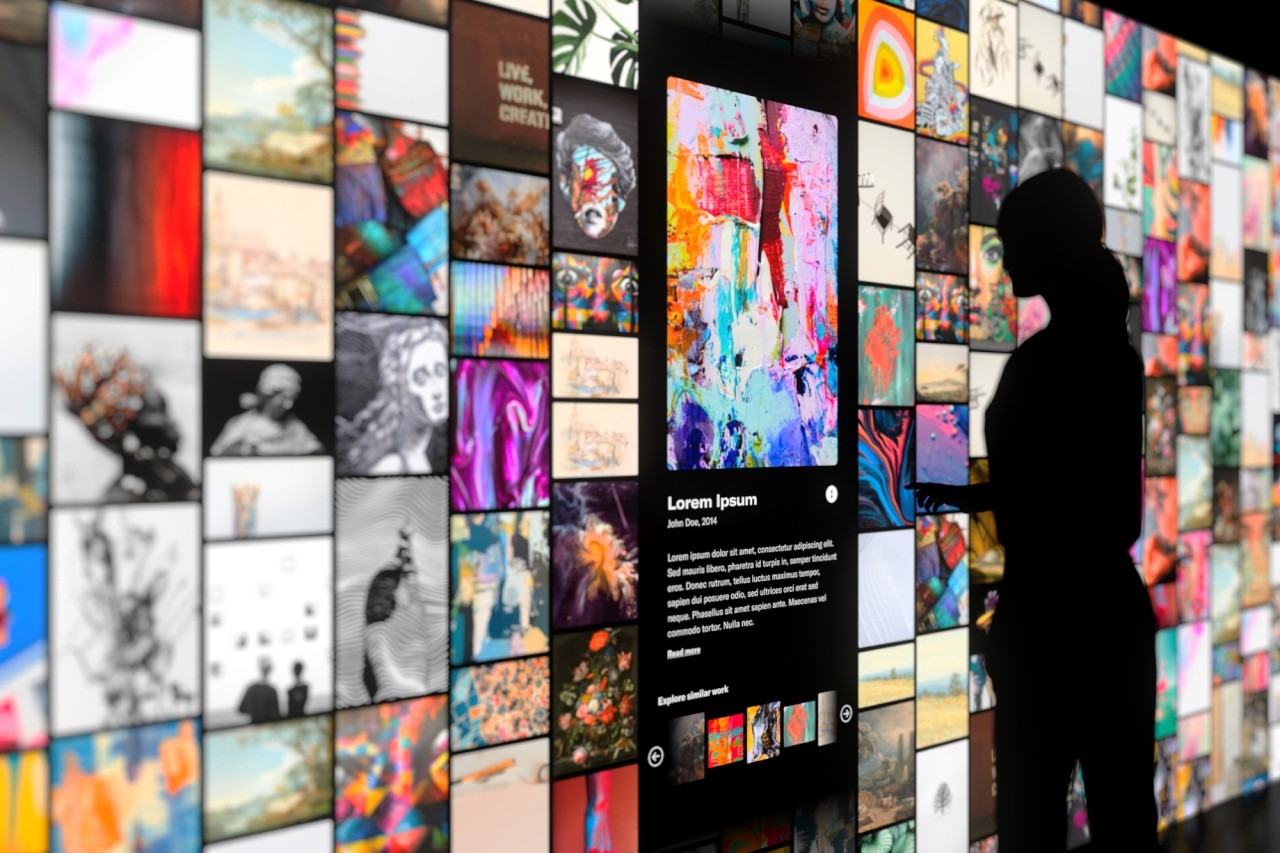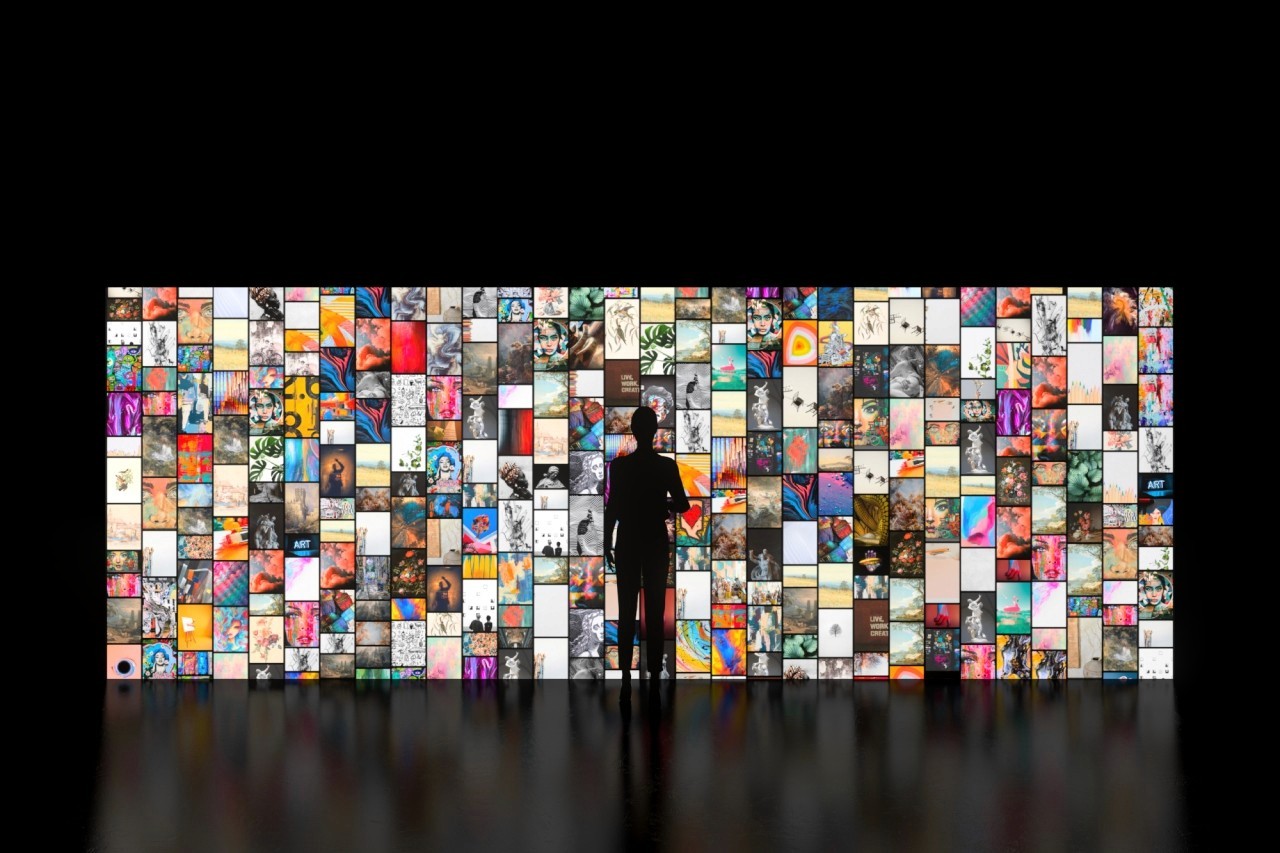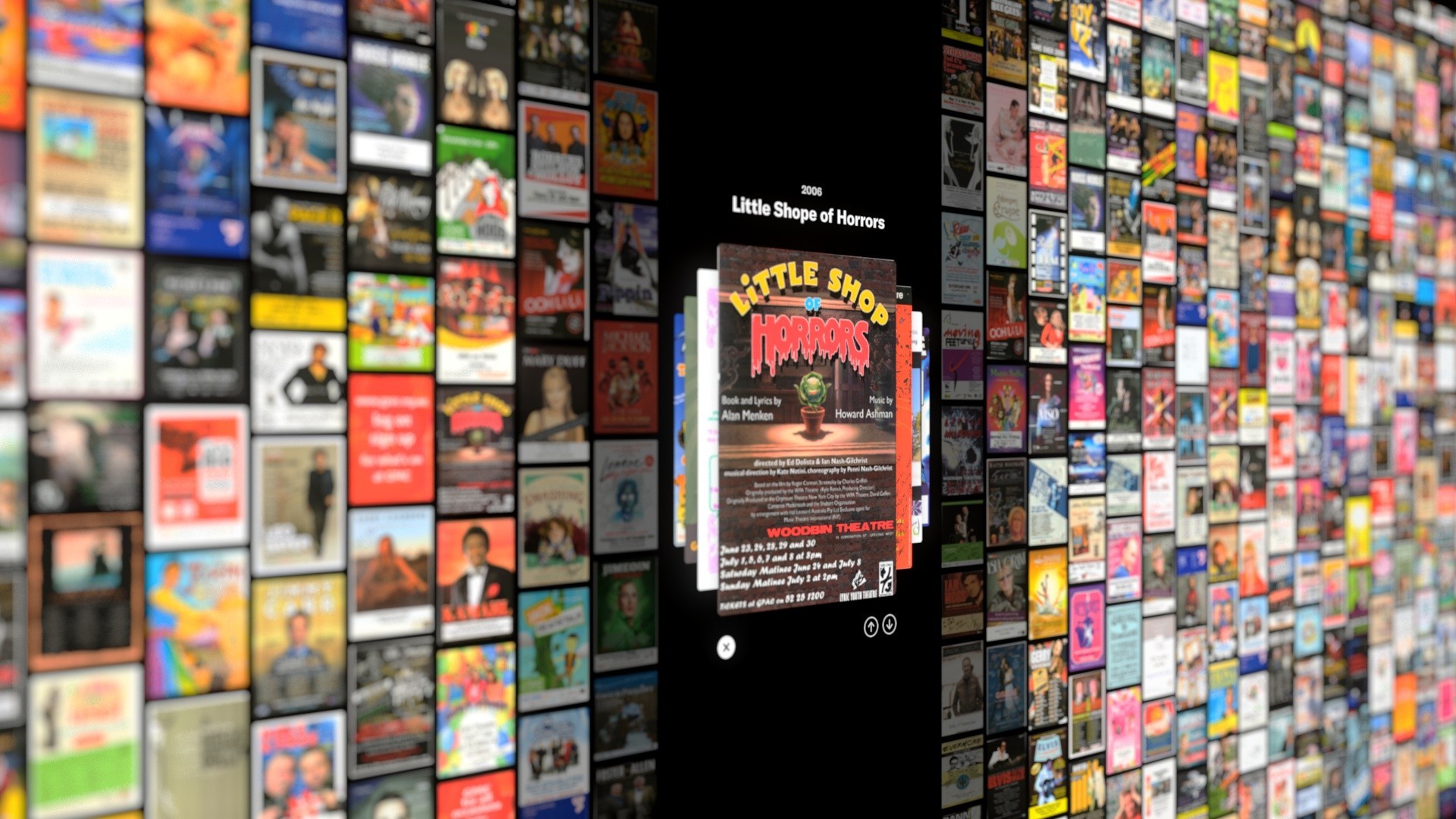UX/UI, Visualisation
Memory Lane
Project
If the Geelong Arts Centre website was projected on a wall and provided multi-user interaction capability in real-time, how would it look? How can the GAC visualise archival content in a way that’s engaging and intuitive?The goal of this project was to design an interactive, intelligent wall inspired by the idea that the GAC has a memory, with the overarching theme of a building as a living organism.
Result
During the initial stages of the project, we considered the most effective way to display the memories of the arts center on a large, interactive display that multiple users could engage with simultaneously. Each memory was defined as a collection of images, video snippets, and a short written description. Similar to human thought processes, the system allows for a seamless transition between current memories and related memories by providing links to related shows.
Initial research focused on other public art spaces, exhibits and community based digital installations. Throughout this phase, we noticed strong trends leaning towards bold, simple grids, graphics based on patterns and repetition, strong use of colour, and emphasis on the work being exhibited. User testing was carried out to gather feedback on the design and identify any issues that needed to be addressed.
The project went through many iterations that ultimately led to a proof-of-concept design which will be taken used as a foundation for the second phase of Memory Lane in the future.




